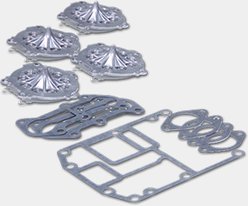Travel your local waterways on a busy summer weekend and you’ll see people handling no wake zones in all possible ways. Thankfully, most people observe them closely and maintain an appropriate speed, but others plow through at the fastest possible off-plane speed or suddenly come off plane right at the buoy, either of which will inflict a sizable wave on the no wake zone and anything it was created to protect.
You can’t control what others do, of course, but you can do your part in maintaining a safe and pristine waterway by knowing exactly what’s required of you in no wake zones. In the short video at the bottom of this page, Mercury Pro Team member Barry Stokes, former host of “Let’s Fish TV,” will show you what a no wake buoy looks like and demonstrate how to operate your boat when you see one.
No wake zones are often found around marinas, bridges, environmentally sensitive areas and more. It might not even be obvious why a particular no wake zone exists, but that doesn’t matter – it’s there for a reason, and you are still responsible for adhering to the directive. Failure to observe a no wake zone can not only result in a hefty fine, it can also endanger people, wildlife and property.
But what does “no wake” actually mean? Many boaters operate under the assumption that no wake speed just means traveling off plane in such a way that the wake – the wave created by the movement of a boat in the water – is minimized and non-destructive. That’s not far off, but the actual definition of no wake speed, according to the United States Coast Guard, is the slowest speed at which the driver can still maintain steerage of the vessel.
This speed can vary a bit for a given vessel, depending on outside factors such as wind and current, but generally speaking no wake speed for recreational boats means that the engine is just in gear with absolutely no additional throttle applied. Most boats will have a throttle detent (or natural stopping place) that you’ll feel right after the engine goes into gear but before the rpm start to climb. When done correctly, your boat will scarcely leave a ripple behind you as you traverse the no wake area.
A few other things about navigating no wake zones to bear in mind:
- Don’t wait until the last second to back off the throttle and come off plane as you approach a no wake zone as this can cause a substantial wake that will pass your boat and disturb the water far into the restricted area. Instead, ease the throttle back gradually and far in advance so that your boat is well settled and your wake dissipated before you pass the buoy.
- It’s always a good idea to take a quick look over your shoulder before you slow down, but especially approaching no wake zones. The driver behind you may not know there is a no wake zone ahead and therefore might not notice you coming off plane, so if there’s someone behind you make sure they know your intentions.
- As long as you have enough thrust to steer, don’t be tempted to inch the throttle forward while navigating a no wake zone. Increasing speed while off plane can quickly create a substantial wake, which is the very thing you’re required to avoid in such an area.
For a more thorough understanding of the rules of navigation, boating safety and more, visit the United States Coast Guard Navigation Center website.






















